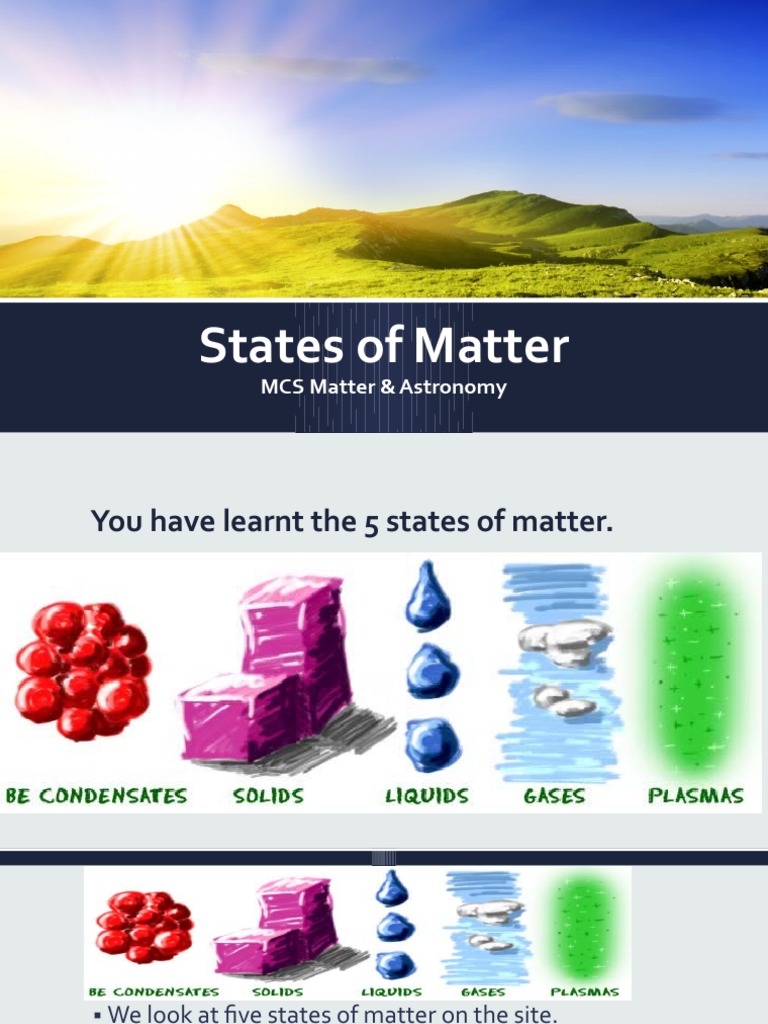Imagine you’re in a world full of different kinds of stuff. Some things are like jelly and some are like hard rocks. In our everyday life, we meet different kinds of matter as we play and learn. Now, let’s explore the five awesome states of matter! Each state is special and has unique characteristics!
1. Solids:
Imagine holding a toy or a block. When you grab it, it keeps its shape. This is what we call a solid! Solids have tight tiny particles that stick together really well. They can’t move around much, which helps them maintain their shape. Think of ice cubes or the crayons in your box. They are hard and don’t change form easily. Solids can be big like a mountain or small like a pebble, but they always hold on to their shapes.
2. Liquids:
Now, think about when you pour juice into a cup. That juice flows and fills up the cup, right? That’s a liquid! Unlike solids, liquids have particles that are a bit more relaxed and can move around. This means they don’t have a fixed shape. They take the shape of whatever container they are in. That’s why if you spill water on the table, it spreads out! Try to remember how your favorite syrup or soup looks as it flows. Liquids can be very heavy or super light, too.
3. Gases:
Next up is gas. Have you ever blown up a balloon? When you fill it with air, that air is a gas! Gases are a bit trickier than solids and liquids. Their particles are very spread out and zoom around quickly. Because of this, gases don’t have a shape or a set size. They will fill up any space they’re in! If you open a bag of chips, the air inside escapes because gases like to move around freely. It’s like the air around us – you can’t see it, but it’s there!
4. Plasma:
You may not see plasma often, but it’s super cool! Plasma is like a gas but even more powerful. It is made up of tiny particles that are so hot and full of energy that they bounce around wildly. Imagine the bright colors you see in a fireworks display! That’s plasma lighting up the sky. The sun itself is made of plasma, shining down on us with its amazing energy. Although we can’t grab plasma like we do with liquids or solids, it’s everywhere—just look at the bright lights and stars!
5. Bose-Einstein Condensate:
Now, here comes the last one: Bose-Einstein Condensate! This one is really special. It’s like a secret club for particles. When it gets super-duper cold (colder than anywhere on Earth!), some particles decide to huddle together and act a bit like one big happy family. They move together as if they are one single particle! This state is very rare and happens only at really low temperatures. Scientists study it to learn more about how our universe works. Isn’t it interesting that something that seems so tiny plays such an important role in understanding the big picture?
How Do They Change?
Did you know that the states of matter can change from one to another? Imagine having a popsicle on a sunny day—it starts as a solid, melts into a liquid, and if you keep it outside, the water could eventually turn into gas! These changes happen through processes called melting, freezing, evaporation, and condensation.
- Melting happens when solid gets warm and becomes liquid. Your ice cream in the sun starts to melt!
- Freezing is like putting water in the freezer, turning it into ice. The particles slow down and hold tightly to become solid.
- Evaporation is when a liquid turns into gas. Like when you leave a wet towel outside on a sunny day, it dries up!
- Condensation is when gas turns back into liquid. When you see water drops on a cold drink on a hot day, that’s condensation happening!
Understanding matter makes our world more exciting. Everything you see and touch fits into one of the five states! Solids, liquids, gases, plasma, and the magical Bose-Einstein condensate all work together to create your fun and lively universe.
So, the next time you sip your juice, feel your squishy toy, or see the shimmering stars, remember the five states of matter and how they play a part in your everyday life!












